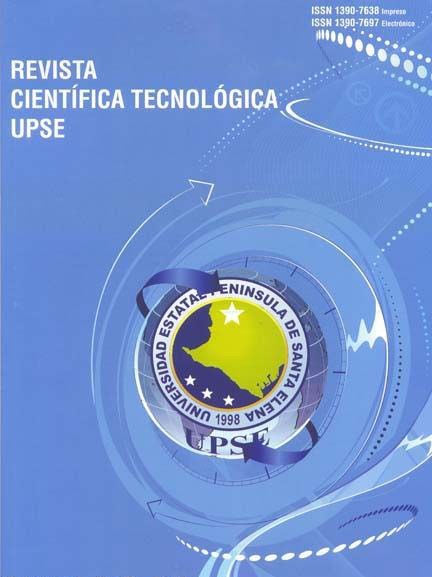El Segundo Cerebro del ser humano.
DOI:
https://doi.org/10.26423/rctu.v1i2.22Palabras clave:
Mesentérico, enteral, cerebro, sistema nervioso, ansiedad.Resumen
Existen dos tipos de cerebros, el conocido por todos formado por el sistema nervioso central, que sería el cerebro donde las emociones se forman en base a las experiencias anteriores. El segundo cerebro, el otro, ignorado por la mayoría de seres humanos es el cerebro que está en los intestinos, Sistema Nervioso Enteral o mesentérico, que se caracteriza por la relación del cerebro y aparato digestivo, este cerebro posee más neuronas que su par, guarda emociones, determina la respuesta de acuerdo al contexto y la intensidad del estimulo. Este articulo tiene por objetivo principal analizar la participación del segundo cerebro en la conducta del hombre, con la ayuda de una nueva especialidad de medicina, la Neurogastroenterología, con su explicación se determina la reacción que existe entre el cerebro mesenterio y el cerebro central, se identifica a cada uno en sus funciones, se efectúa un análisis referencial de como el estrés influye en la conducta, produciendo una crisis. Se manifiestan con trastornos fisiológicos y psicológicos, como diarreas o estreñimiento, con dolor y trastornos de ansiedad, cansancio, insomnio, falta de concentración perdida de la memoria y a su vez ulceras gástricas, hipertensión, gases, que no necesariamente se debe solamente a un problema estomacal producido por una mala ingesta de alimentos, sino por comportamientos emocionales que repercuten negativamente en esta parte del cuerpo. Se comprobará la influencia del segundo cerebro en la impulsividad y sus daños colaterales en el organismo
Descargas
Referencias
LURIAA. (1999), Introducción: La continua influencia de Alexander Luria en todo el mundo Neuropsicología, Vol 9 No. Marzo 1999 pp 1-7
CAPRA F., (1998), La trama de la vida. Una perspectiva de los sistemas vivos, Editorial Anagrama S.A. Barcelona.
[THOMPSON W. (1992), "Las implicaciones culturales de la nueva biología" en Lovelock, J. y otros. Gaia: Implicaciones de la nueva biología. 2° ed., Editorial Kairós, Barcelona.
FOUCAULT M. (1980), Microfisica del poder.2° Ed, Las Ediciones de la Piqueta, Madrid.
IDEM (2008), Filosofía, Ciencia y Saber Andino: Bases ontológicas, gnoseológicas y epistemológicas de la inter e intraculturalidad,2° ed. Editorial Universidad Bolivariana, Santiago.
DR. GERSHON, 2007 trasplante del sistema nervioso entérico. Un paso más hacia el tratamiento para aganglionosis. Gut. Apr; 56 (4) :459-61. Revisar.
MATURANA H y VARELA F.(1995), El árbol del conocimiento: Las bases biológicas del entendimiento humano. 12° Ed, Editorial Universitaria, Santiago
J SIERRAP, (2001) El cerebro intestinal. Servicio de Digestivo. Hospital General Universitario Vall d’Hebron. Barcelona.
Universidad de Buenos Aires facultad de Psicología. Publicada 06/11/2010
MARTÍ E., 2005Segundo Cerebro: Neurogastroenterología. Presidenta Asociación AACICAT Associació d'Afectats Còlon Irritable de Catalunya
SERRA J, AZPIROZ F, MALAGELADA J-R. Perception and reflex responses to intestinal distension in humans are modified bysimultaneous or previous stimulation. Gastroenterology 1995; 109: 1742-1749
REVISTA CIENTÍFICA , (2010)Todo Salud Edita: Instituto Biológico De La Salud Médico experto: Dr. Domingo Pérez león, Boletín nº 6 • Edición Marzo
ROMERO H., 2010. Los Hemisferios Cerebrales y su dominio, 4 ed. Revista Ciencia de la UNEMI, Universidad Estatal de Milagro. Ecuador
Descargas
Publicado
Número
Sección
Licencia
El titular de los derechos de autor de la obra, otorga derechos de uso a los lectores mediante la licencia Creative Commons Atribución-NoComercial-CompartirIgual 4.0 Internacional. Esto permite el acceso gratuito inmediato a la obra y permite a cualquier usuario leer, descargar, copiar, distribuir, imprimir, buscar o vincular a los textos completos de los artículos, rastrearlos para su indexación, pasarlos como datos al software o usarlos para cualquier otro propósito legal.
Cuando la obra es aprobada y aceptada para su publicación, los autores conservan los derechos de autor sin restricciones, cediendo únicamente los derechos de reproducción, distribución para su explotación en formato de papel, así como en cualquier otro soporte magnético, óptico y digital.












